Tewkesbury Abbey
Chapter 1: Visiting
Introduction
Tewkesbury has one of the largest Romanesque towers in all of Europe. Its Norman nave and surviving mediaeval stained glass, together with its impressive chantries, make it well-worth visiting for architectural interest as well as the fascinating part the occupants of those chantries played in English history.
The town itself is a typical example of the lovely black and white timbered architecture which is a feature of the Welsh/English border towns. The old settlement is a ribbon development, resulting in a very long main street, called Church Street. The Abbey is on the eastern end of Church Street, set just back from the road.
Abbey
Entrance to the Abbey is through the north door, and as soon as you walk in you are confronted with one of the most splendid naves you will ever see. Tewkesbury is enormous, one of the largest parish churches in the country, and bigger than half of England's cathedrals.
The great round headed arches are symmetrical and uniform, leading the eye up to the splendid vaulted ceiling.
The ceiling itself becomes grander as you advance up the nave to the quire.
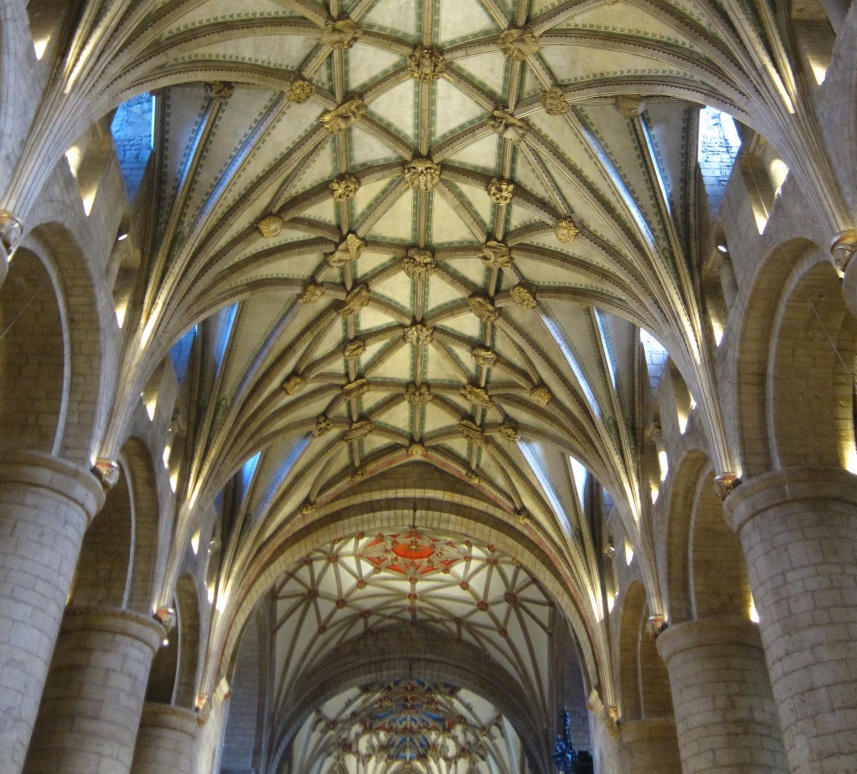
The aisles, too, are in Romanesque style (11-12th centuries).
Along the aisles are the later tombs of some of the Abbots and other benefactors of the Abbey.
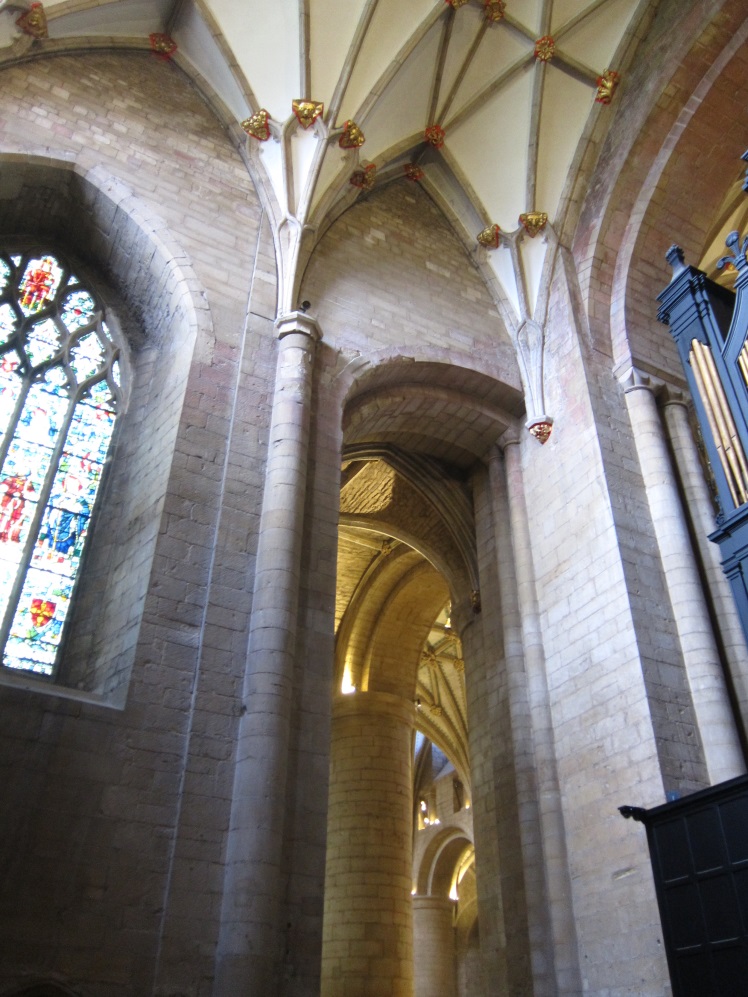
Travelling up towards the east end of the Abbey, you can see the change in architecture as the Decorated style of the fourteenth century takes over east of the transept culminating in a semi-circular apse.
On the north aisle, about half way up the quire, is the former St James's Chapel, now fitted out as the Abbey Bookshop. This was the burial site of the Lancastrian leaders killed at the battle of Tewkesbury.
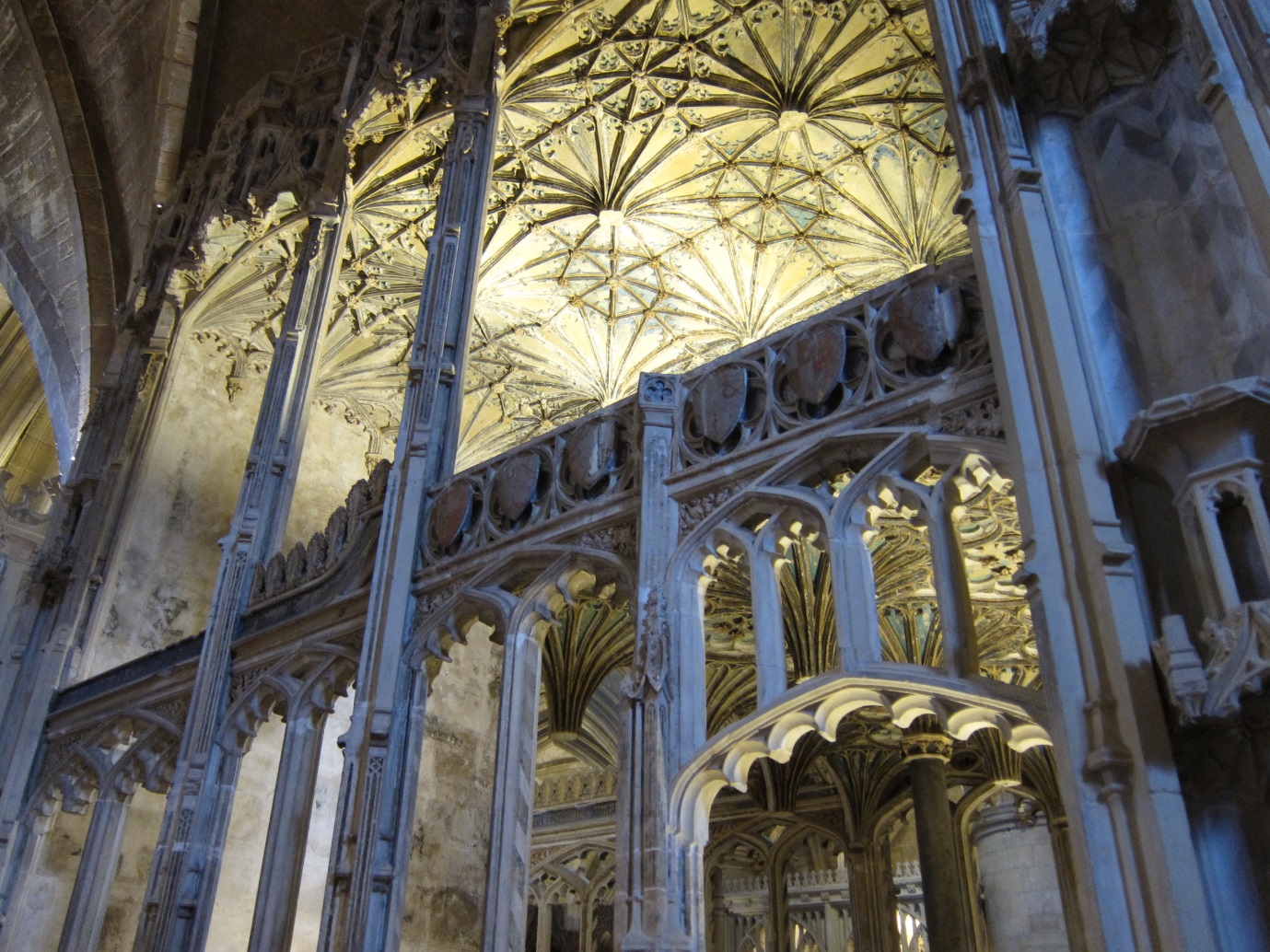
Along the length of the quire are the fourteenth and fifteenth century chantries, places where priests would say daily Masses for the souls of the departed who are depicted in effigy, dressed in armour or gown on the top of the tomb, but often with a skeleton depicted below, to remind the viewers of the transitory nature of human life. The stone carvings of these chapel screens is marvellously delicate.
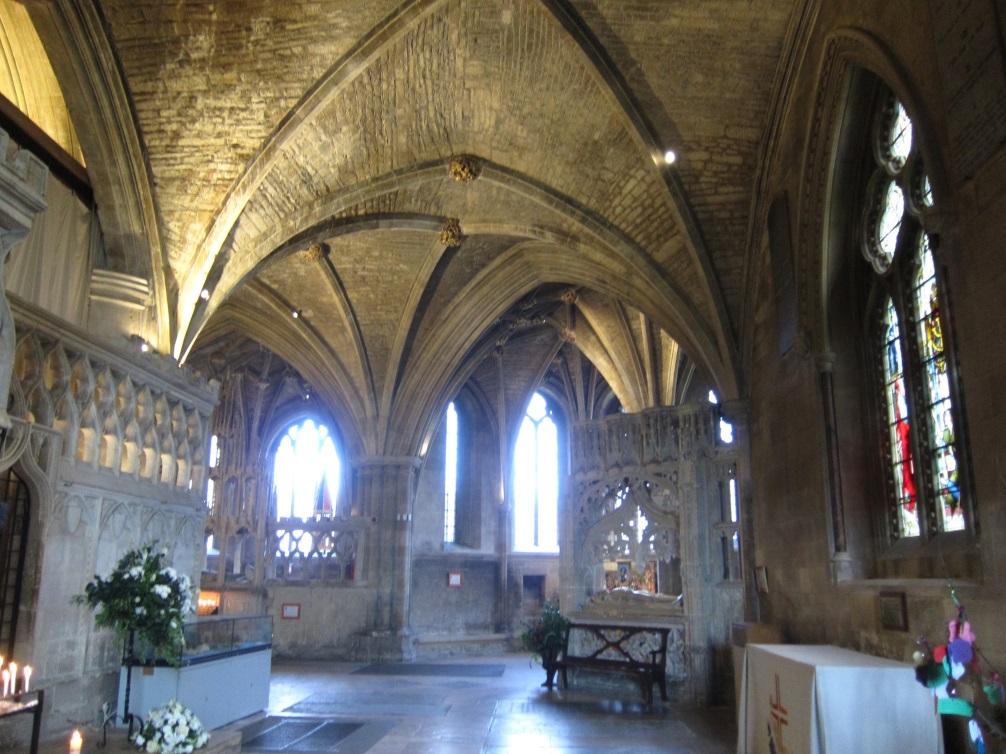
The curved apse at the east end is an area of space and light. The colours pouring through the mediaeval and later glass light up the stone floor.
The stained glass windows (right in the picture above, and in the upper storey of the quire), were donated by Eleanor de Clare, grand-daughter of Edward I and Lady Despenser.
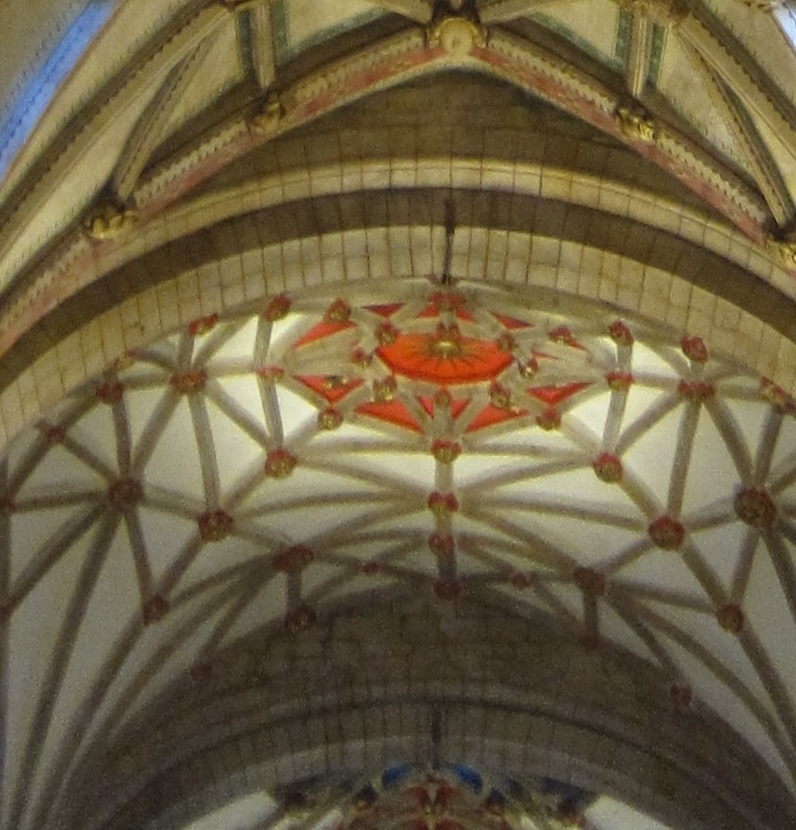
In the centre of the quire is a plaque, commemorating the burial spot of Edward of Lancaster, Prince of Wales, son of Henry VI. Killed either at, or shortly after, the Battle of Tewkesbury, Edward is condemned to forever gaze up at the Sun-in-Splendour badge of his vanquisher, Edward IV of York.
Allow at least an hour for a thorough visit – there are so many tombs and monuments and it is worth spending time examining them in detail.
